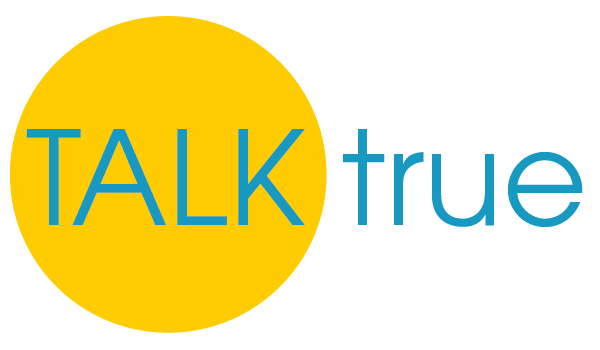Talktrue - Resolve
TalkTrue© Conflict Prevention & Culture Change
Harnessing the Power of Positive Psychology to Prevent Conflict & Repair Work Relationships
Clashes and conflict at work; there is a better way
Bullying in the workplace costs. Costs can include lost productivity, absenteeism, turnover, investigation costs to name but a few. Perhaps the biggest cost can be the angst and emotional trauma people experience when there is conflict around them at work. Bullying in the NHS costs £3bn a year and costs can get really out of hand if things end up in a Settlement Agreement or litigation and a tribunal award.
The higher up the organisation any fall out or conflict happens, the greater the impact is felt across the whole company. Often, the only option available is to ‘reach for an HR process’ because what else can you do? However, when it gets to that point where you are ‘going formal’, the prospects of ever repairing relationships afterwards can disappear. Procedures can force people into ‘victim/perpetrator’ modes, (Karpman 1968), which can actually make matters worse; people say things they then can’t then un-say.

Restorative Approaches in the workplace.
A restorative approach is an alternative way of thinking about managing people and situations involving conflict, difficult behaviour and damaged relationships at work. It helps people to explore their own solutions, not have one imposed upon them by another. It provides a way of handling people issues at work in a less procedural, more person-centred way. It has been referred to as “a better way to disagree, prevent conflict and repair harm” (Hopkins, 2016)
People will be People!
Formal disciplinary and grievance procedures are not specifically designed for the grey, indefinable and subjective minefield of relationships and personalities at work. These present adaptive challenges (Heifetz & Linsky, 2002). Adaptive challenges are not technical or routine; they are novel. Formal HR procedures work well with rule breaking and conduct issues which are not novel; they have happened before such that there is a process which can be followed e.g. for hitting a supervisor, being caught with your hand in the till, making a racist remark to a colleague, turning up late, etc. We know how to deal with these;
| Type of Challenge | How to Address | What/who resolves |
| Technical | Apply current know-how | Authorities, procedures, process |
| Adaptive | Learn new ways | Those involved with the problem |
What happens when people don’t get on at work? What if people who used to get on suddenly fall out with each other or someone who used to be happy and productive suddenly becomes withdrawn or angry? What happens when matters involve the difficult behaviour of a manager or colleague and staff feel powerless to say or do anything, for whatever reason? These are adaptive challenges and can affect everyone around the participants to the conflict in some way. Doing nothing is not an option. These situations can occur whether the organisation is a successful, high performing, high profile organisation or a local hospice or school; whether it is a 50,000-employee global organization or a 50 strong local one. It’s any place where people work and interact with each other. A restorative approach is about helping individuals find their own ways forward with the right help and support at the right time.
HR Procedural Approach versus a Restorative Approach
In my 45 years as an HR practitioner, (27 of which have been at HR Director level), I have never known people to just ‘shake and make’ up after they have been taken through formal disciplinary or grievance procedures. Colleagues who have gone through formal processes in this way, rarely go back to working together amicably. More often than not, relationships are irretrievably damaged. People say things in these processes to defend themselves which then can’t be un-said. It usually falls to HR to try and find one or other or both of the parties, another job elsewhere in the organisation. Some organisations are too small for this to happen and people can lose their jobs.

The Restorative Approach is a shift from focusing on
• Rule-breaking – to looking at the impact on people
• Blame or guilt – to people taking responsibility and jointly problem-solving
• Adversarial processes to dialogue and negotiation
• Sanctions and punishment to repair, apology and reparation
• Impersonal processes to Interpersonal processes
And, as a result;
People feel they are being listened to. They feel that they have some modicum of control over what happens to them as they try and find a way forward and out of the difficult situation, they find themselves in.
Theoretical Background
Restorative Approach (RA) is based on a range of broad theories. It evolved from the field of restorative justice as a way of bringing people affected by crime together to repair the harm caused. In the past 20 years other key ideas have developed an approach that is far more widely applicable than simply in the criminal justice arena. Key influences include: (1) the person-centred coaching approach, (Nelson-Jones 2001) first developed by Dr Carl Rogers (1902 – 1987), (2) Restorative Approaches (Hopkins 2004; 2009; 2011; 2015). (3) Adaptive Leadership (Heifetz 1998), (4) Circle Time inspired by the work of Bliss, Robinson and Maines (1995) and Mosley & Tew (1999).
In addition, advances in neuroscience, socialisation and emotionality, “continue to shed light on what may be happening when people in conflict or in the aftermath of harmful behaviour, find themselves face to face in a constructive dialogue. In essence, RA takes the “expert” out of the driving seat when trying to resolve conflict and engages & enables people to explore their own solutions. The environment described by Rogers is one where a person feels free from threat. This environment is based on deep understanding (empathic), acceptance (having unconditional positive regard) and genuineness (congruent). Theoretical models from child development, social care and neuroscience can help to explain and endorse the benefits these practices bring to conflict situations.
In the Restorative Approach, a facilitator:
(a) Uses these three skills of empathy, having positive regard and congruency, to help those who have fallen out, find a way forward
(b) Aims to help participants steer towards becoming more empathic, positive and congruent towards those they have fallen out with or have a difficulty with, in an endeavour to restore broken relationships
(c) Takes away any perceived or real threat about potential disciplinary sanctions or action, to enable colleagues to be open and honest with each other, without fear of sanction or losing their job if they speak out.
When helping people to find their own way out of conflict, I use the following process;
3 STEPS in the RESTORATIVE CONVERSATION
1. Share
What’s happened/ share my thoughts and feelings/share how what has happened has impacted on me.
Everyone has their own perspective on any given experience or issue and their own thoughts and feelings. How matters affect one person will differ from how it affects another.
Let everyone express what he/she personally experienced and felt and what happened and how they were/are impacted as a result
NB At this point, stop for a natural break
2. Reflect
How could things have gone/been better?
An important part of the process is encouraging everyone to try think what they could have done better and to see matters through others’ “lenses”.
3. Move Forward
Helping those affected to find ways forward – something needs to happen or take place in order to improve things.
Everyone is asked what they need now to help resolve matters and get things onto a better footing, in order to be able to feel better and move on.
What could everyone do, individually, which might help improve things going forward?
(With thanks to and adapted from Chris Stevens, Senior Manager, Restorative Practice and Countywide Services Surrey County Council and Doctor Belinda Hopkins of Transforming Conflict).
